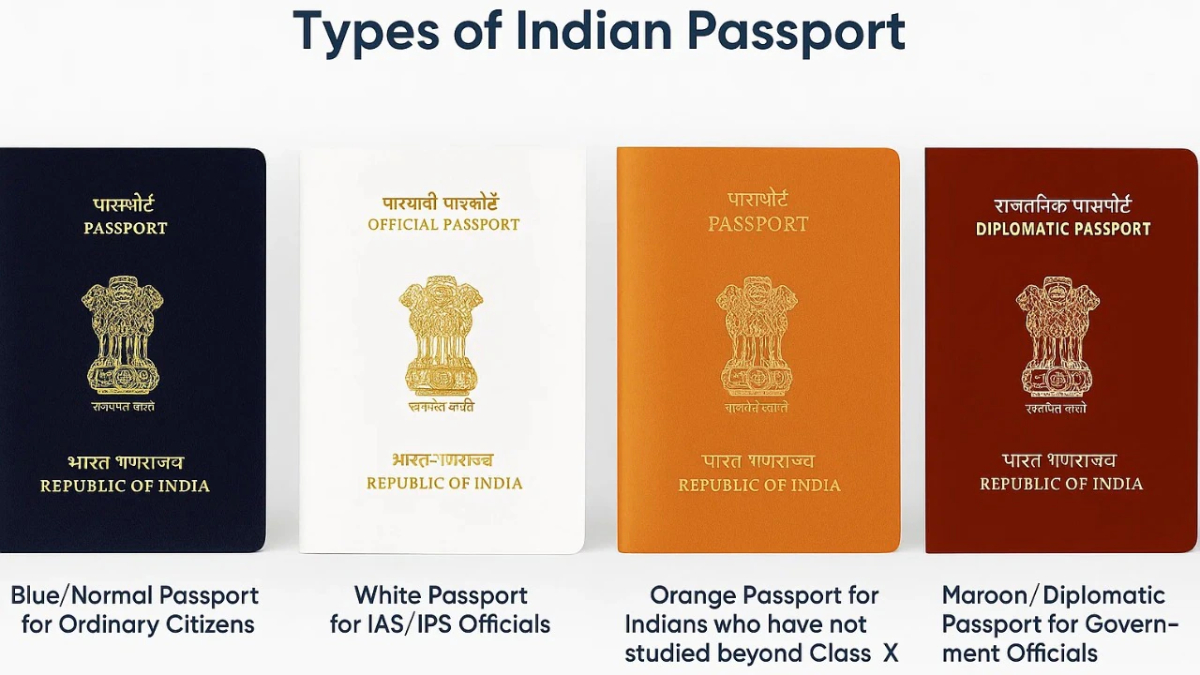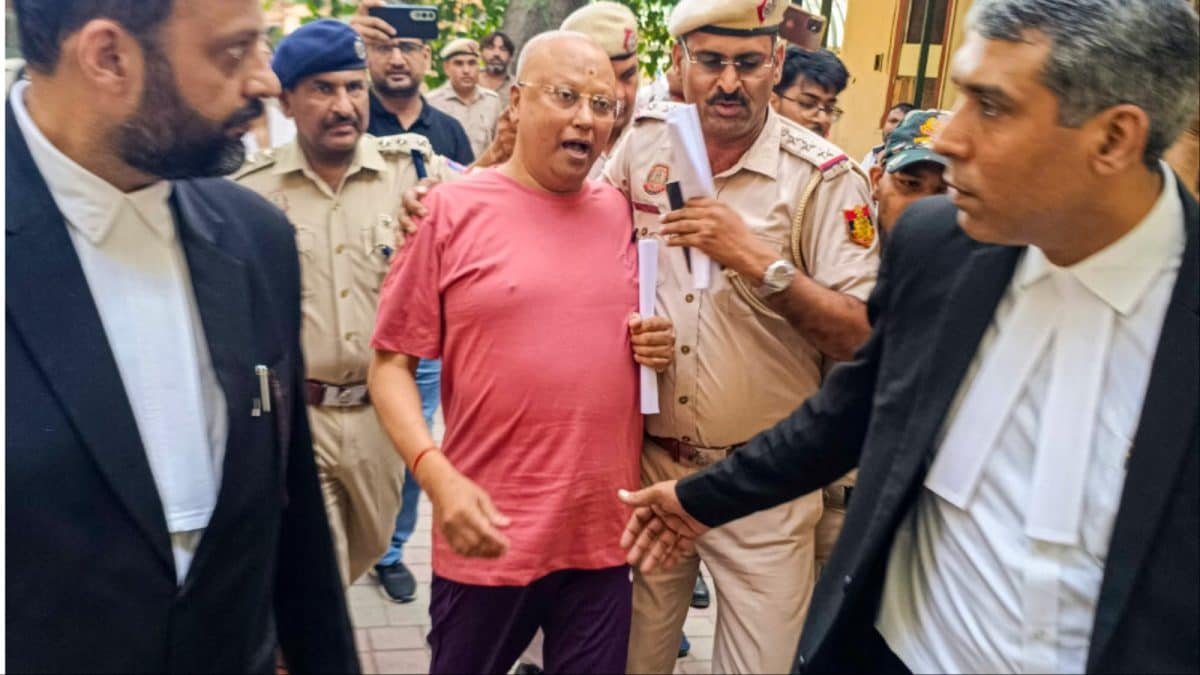Now Reading: Explained: Why Indian Passports Come in Four Colours and Who Gets Them
-
01
Explained: Why Indian Passports Come in Four Colours and Who Gets Them
Explained: Why Indian Passports Come in Four Colours and Who Gets Them

A passport is more than just a travel document; it is a symbol of national identity and, in India, its colour also signifies the holder’s status and the purpose of their journey. The Indian Ministry of External Affairs (MEA) issues passports in primarily three distinct colours—Navy Blue, White, and Maroon (Red)—with a fourth, Orange, having been introduced and later discontinued. This colour-coding system is a functional tool used globally to streamline security checks, categorise travellers, and instantly communicate a person’s role to immigration authorities worldwide.
Here is a detailed breakdown of the four colours of Indian passports and the citizens who are eligible for them:
1. Navy Blue Passport: The Ordinary Passport
The Navy Blue passport, officially the Ordinary Passport or ‘Type P’ (for Personal), is the most common and widely issued travel document in India.
- Who gets it: This passport is issued to all ordinary citizens of India who are travelling abroad for personal reasons. This includes travel for tourism, leisure, business, education, work (for non-ECR category citizens), and general personal visits.
- Purpose: The blue colour helps foreign immigration authorities quickly differentiate between ordinary citizens and those travelling in an official government capacity. It is the standard document for the vast majority of Indians travelling internationally.
- Validity: Typically 10 years for adults and 5 years for minors (under 18).
2. White Passport: The Official Passport
The White passport is a specialised document reserved for a select group of individuals representing the government.
- Who gets it: It is strictly issued to Indian government officials, civil servants, and members of the armed forces who are travelling abroad on official duty. This includes officials from the Indian Administrative Service (IAS), Indian Police Service (IPS), and other bureaucrats or government representatives on assignment.
- Privileges: The white cover signals the official status of the bearer. Holders often receive certain privileges, such as faster clearance and special treatment at immigration and customs counters, due to the nature of their official mission.
- Issuance: Unlike the ordinary passport, it cannot be applied for by the general public. Its issuance involves a rigorous process that includes an official ID, a duty certificate from the concerned department, a forwarding letter, and often clearance from the Prime Minister’s Office (PMO) or other high-level clearances.
3. Maroon (Red) Passport: The Diplomatic Passport
The Maroon or Red passport is the highest-ranking travel document, a symbol of a diplomatic mission and high office.
- Who gets it: This passport is issued to Indian diplomats, senior government officials, Members of Parliament (MPs), and members of the Union Council of Ministers. In some cases, immediate family members of these officials may also be eligible. It is a ‘Type D’ passport (for Diplomatic).
- Privileges: The Maroon passport confers significant privileges and immunities under international law, including diplomatic immunity. Holders benefit from the most expedited visa processing and, in many countries, enjoy visa-free travel or visa-on-arrival access, streamlining their movement across international borders for official representation.
- Issuance: Similar to the white passport, it is granted by the Ministry of External Affairs upon strict verification, including the duty and status of the applicant.
4. Orange Passport: The ECR Passport (Discontinued)
The Orange passport was a short-lived initiative by the Indian government aimed at a specific category of workers.
- Who it was for: It was intended for Indian citizens who fell under the Emigration Check Required (ECR) category. This generally included individuals who had not completed a certain level of formal education (typically Class 10 or higher) and were travelling to specific countries for overseas employment.
- Purpose: The orange cover was designed to help immigration authorities easily identify these travellers. The idea was to ensure they underwent additional, compulsory emigration procedures before departure, acting as a safeguard for less-educated workers often considered vulnerable to exploitation abroad.
- Discontinuation: The government eventually stopped issuing the orange passport in 2018. The decision was reversed following concerns and criticism that the separate colour was discriminatory and created a visible divide among Indian citizens based on their educational qualifications. The ECR status is now noted within the blue (ordinary) passport itself for those who require it.
In recent years, all three main passport types—Blue, White, and Maroon—are increasingly being issued as secure, tamper-proof e-passports with embedded electronic chips, further enhancing the security and efficiency of international travel for all categories of Indian citizens.










